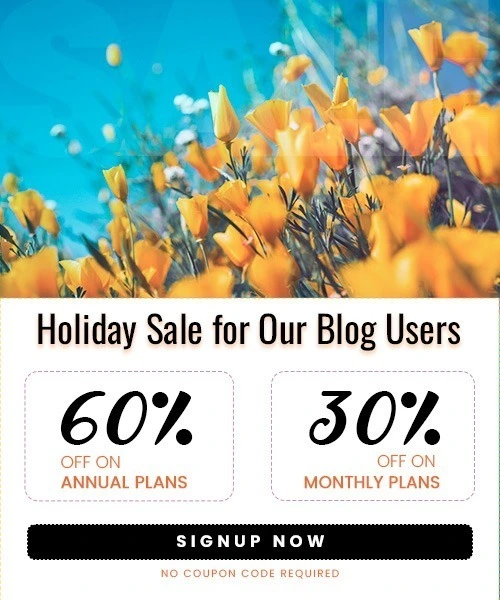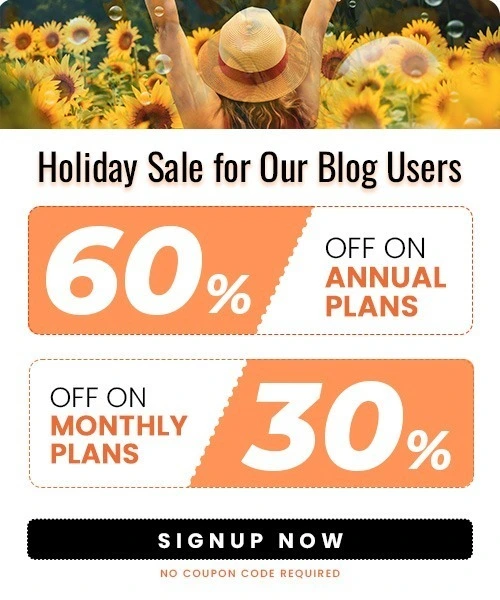Facebook Algorithm 2025: How It Works and How to Beat It
Facebook’s algorithm has evolved from a basic content sorter to a powerful AI-driven system that shapes what billions see. For marketers, advertisers, and curious users alike, understanding these changes is key to thriving in today’s social media landscape.
In this guide, we’ll detail what exactly the Facebook algorithm is, how you can make it work in your favor, and the new changes to Facebook’s algorithm, and guide you on how to be at the forefront of trends.
What is the Facebook algorithm?
The Facebook algorithm is the silent force determining what 3.065 billion people see when they log on every time. In a relentless barrage of posts, photos, videos, and machine learning models that decide what content shows up in a user’s News Feed.
Unlike chronological feeds, Facebook’s News Feed is personalized, it’s customized for each user based on what they’ve done in the past, how they’ve interacted, and what they like.
As part of Meta’s commitment to transparency, the company provides AI system cards to explain how its technologies work, including the algorithms behind Facebook.
These cards help people understand how content is ranked and recommended, in a clear way for experts and everyday users.
Understanding How Facebook’s Algorithm Works and Its Changes
1. How the Facebook Algorithm Works
According to Meta, the algorithm uses four key steps each time you open Facebook to display the most relevant content.
- Inventory – This refers to all available content that could potentially appear in a user’s News Feed — posts from friends, pages followed, groups, and ads.
- Signals – These are data points used to evaluate each piece of content, such as:
- Who posted it (friend, group, page)
- Type of content (video, image, text)
- Engagements (likes, comments, shares)
- Recency (when it was posted)
- User behavior (how often the user interacts with similar content)
- Predictions – Facebook’s AI predicts how likely a user is to:
- Click on a post
- Watch a video
- Share or comment
- React (like, love, etc.)
- Spend time viewing the content
- Score – Each post is given a relevance score based on these predictions. The higher the score, the more likely it is to appear near the top of the feed.
2. Key Algorithm Changes
AI-Driven Personalization
- Predictive Engagement: AI prioritizes posts likely to spark meaningful interactions (comments, shares) over passive likes.
- Reels Optimization: Short-form videos are prioritized, with AI analyzing audio, visuals, and watch time to recommend trending Reels.
Emphasis on Community Content
- Groups and Events: Posts from active groups and local events rank higher, reflecting Facebook’s focus on community-building.
- User-Generated Content: Authentic posts from followers (e.g., reviews, photos) receive boosted visibility.
Transparency and Control

- Customizable Feeds: Users can prioritize content via “Favorites” or switch to chronological sorting.
- “Why Am I Seeing This?”Enhanced explanations for algorithmic recommendations.
Note: You might also want to check out our guide on Master Facebook SEO to improve your visibility.
Fighting Misinformation
- Click Gap Analysis: Identifies low-quality links by comparing Facebook interactions to traffic on external sites.
- AI Fact-Checking: Automatically marks as false claims in videos and Reels.
Key Areas Where the Facebook Algorithm Works
The Facebook algorithm works in several important areas, each designed to provide the most appropriate content for users and promote maximum engagement. The following are the main segments where the algorithm is working:
1. News Feed
- Ranks and curates posts from friends, pages, groups, ads, and recommendations.
- Analyzes all available content using signals (like who posted it and your past activity), predicts engagement, and assigns a relevance score to decide post order.
- Let users customize their feed by favoriting, seeing recent posts first, hiding or snoozing content, unfollowing/reconnecting, and adjusting what they see more or less of.
2. Stories
- Displays ephemeral content (photos and videos) from users, creators, and businesses you follow.
- The stories algorithm prioritizes content from accounts you interact with most, using signals like recent engagement and viewing history to determine order.
3. Reels
- Surfaces short-form video content, both from accounts being followed and suggested creators.
- The algorithm takes into account engagement signals (views, shares, audio/template usage), anticipates which reels will continue to engage users or motivate creation, and ranks accordingly.
4. Groups and Events
- Highlights posts and updates from groups and events a user is part of.
- The algorithm boosts content from active groups and events, especially those generating high engagement or matching user interests.
5. Marketplace and Search
- Shows relevant products, listings, and search results.
- The algorithm uses user interests, past activity, and engagement signals to recommend items or surface search results most likely to interest the user.
6. Ads and Sponsored Content
- Delivers targeted advertisements.
- The ad algorithm considers a wide range of signals, including user demographics, interests, behaviors, and engagement history, to serve the most relevant ads and optimize for conversions.
7. Reported and Harmful Content
- Prioritizes review and moderation of potentially harmful or reported content.
- AI systems analyze severity, virality, and likelihood of violations to ensure that the most harmful content is acted upon quickly, supplementing human moderation efforts.
Success Stories to Inspire You
The Facebook algorithm helps brands and creators increase reach and engagement.
Here are three success stories showing how smart strategies led to viral content and growth. These examples reveal key insights for succeeding on Facebook:
Example 1: Glossier: The beauty brand Glossier understood the power of influencer marketing and collaborated with influencers to ensure their content was not only seen but also interacted with.

This strategy tapped into the algorithm’s preference for popular content, driving organic reach and engagement.
Example 2: Hawkers: The eyewear brand Hawkers collaborated with Spanish clothing brand El Ganso for a joint line of sunglasses. By leveraging the Facebook algorithm’s ability to personalize content based on user behavior, they tested standard and collection ad formats.

The algorithm favored collection ads, which showcased multiple products, resulting in 86% higher engagement and a 51% better return rate. This highlights how aligning with algorithm-driven formats can significantly boost campaign performance.

Example 3. Nike has adeptly navigated Facebook’s evolving algorithm by shifting from organic content to a robust paid advertising strategy, aligning with the platform’s preference for content from friends and creators over brands.
How to Optimize Your Content for the Facebook Algorithm
1. Prioritize Genuine Engagement
- Spark Conversations: Engage comments by using polls, Q&As, and open-ended questions. Posts with rich discussions receive greater visibility.
- Steer Clear of Engagement Bait: Sentences such as “Comment below!” are punished unless they organically spur conversation.
- Respond Promptly: Engage actively to indicate post value to the algorithm.
2. Use Short-Form Video
- Reels First: Make vertical Reels (9:16) under 30 seconds with popular audio and hooks within the first 3 seconds.
- Optimize Watch Time: Strive for videos that keep users beyond 50% watch time.
- Add Captions: 85% of users watch without sound- use Facebook’s auto-caption feature.
Note: For more visual optimization tips, don’t miss our Facebook Image & Video Size Guide.
3. Focus on Original, High-Quality Content
- Avoid Repurposed Content: Facebook limits reach for unoriginal or AI-generated posts.
- Use Human-Centric Stories: Showcase real employees, customers, or behind-the-scenes moments.
- Incorporate Keywords: Embed niche terms in captions and hashtags to improve search visibility.
4. Align with Algorithmic Signals
- Relationship Matters: Content from frequently interacted accounts (friends, groups, pages) ranks higher.
- Content-Type Preference: Post formats your audience engages with most (videos, images, text).
- Recency: New posts get priority, especially for time-sensitive topics
5. Optimize Posting Strategy
- Peak Times: Schedule posts when your audience is most active (check Insights).
- Private Shares: Create content worth sharing via Messenger/WhatsApp signal high relevance.
- Consistency: Post regularly to stay visible, but prioritize quality over quantity.
6. Use Data-Driven Tactics
- A/B Test Formats: Try out carousels, live videos, and single images to determine what works.
- Monitor Insights: Use watch time, shares, and retention to tune content.
- Retarget Engaged Users: Utilize Facebook Ads to re-engage users who watched previous content.
Learn how to reach people who don’t follow you by understanding Facebook’s algorithm and how it distributes content, insights shared by Facebook creator Chef Darius.
Facebook Algorithm Myths vs. Facts
Understanding the Facebook algorithm is key for creators looking to boost their content’s reach and engagement. Here are several myths about how it works that still exist.
1. Myth: Only Reels and videos succeed.
Fact: All content types (text, images, links) work if they spark authentic engagement like comments and shares.
2. Myth: Posting more frequently guarantees reach.
Fact: Quality over quantity-overposting reduces engagement. Focus on high-value, conversation-driven content.
3. Myth: Hashtags are the key to visibility.
Fact: Relevance trumps hashtags-use 3–5 niche-specific tags to avoid appearing spammy.
4. Myth: Engagement bait (e.g., “Like if you agree!”) boosts reach.
Fact: Facebook penalizes artificial engagement tactics. Prioritize organic discussions with polls or questions.
5. Myth: You must pay for ads to get results.
Fact: Organic reach thrives with Reels, Groups, and interactive posts. Ads amplify but aren’t essential.
6. Myth: Longer videos perform best.
Fact: Short videos (30 seconds) dominate-focus on hooks and retention to satisfy the algorithm.
Final thoughts
The Facebook algorithm personalizes content on News Feed and Reels using AI. To increase reach and engagement, prioritize authentic interaction, quality consistency, and alignment with algorithm signals. Being adaptable is crucial for brands, creators, and users.
Frequently Asked Questions
1. What is the Facebook algorithm?
It’s a system that ranks and personalizes the content users see based on behavior, preferences, and engagement signals.
2. How can I improve my Facebook reach?
Post high-quality, original content consistently, use Reels, and encourage meaningful interactions like comments and shares.
3. Do hashtags still work on Facebook?
Yes, but use them sparingly. 3 to 5 niche-relevant hashtags are best for visibility without looking spammy.
4. Is video the only way to succeed on Facebook?
No. While video performs well, text, images, and links can also succeed if they generate authentic engagement.
5. Does Facebook prioritize paid content?
Not necessarily. Organic content can still thrive, especially in Groups, Reels, and with strong engagement metrics.



